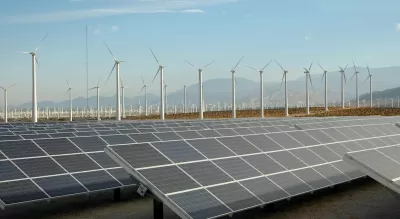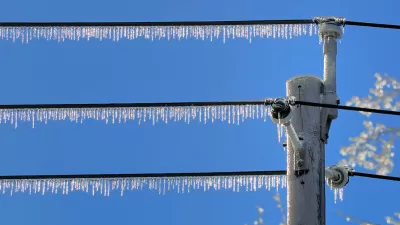The equivalent of 480 nuclear reactors’a worth of power generated from renewable sources is being produced but not captured in the U.S. and Europe — a number expected to grow as investment flows into the renewable energy industry.

Power grid infrastructure worldwide has not kept pace with the significant growth of renewable energy, according to an article from international media outlet Nikkei. The world increased renewable power capacity by an impressive 64 percent last year, reports Nikkei staff writer Misa Hama reports. But many of the projects lack grid access, meaning much of the energy produced — the equivalent of 480 nuclear reactors worth, to be precise — is going to waste.
It’s primarily wind and solar power that’s going to waste in the United States, where “the capacity of renewable facilities without grid access reached 1,500 GW on an output basis in 2023, a ninefold increase since 2015, according to the Lawrence Berkeley National Laboratory in California,” the article reads. A source interviewed for the piece attributes the sharp increase in part to the Inflation Reduction Act, which promotes renewable energy through tax incentives.
The lack of grid capacity could stall the transition away from fossil fuels and to renewable and clean energy. Fortunately, Hama reports, “Recognizing this risk, some governments are taking steps to address the issue. In early August, the U.S. announced an additional $2.2 billion investment to upgrade its power grids” and other governments worldwide are following suit.
FULL STORY: Renewable energy wasted worldwide due to lack of power grids

Alabama: Trump Terminates Settlements for Black Communities Harmed By Raw Sewage
Trump deemed the landmark civil rights agreement “illegal DEI and environmental justice policy.”

Planetizen Federal Action Tracker
A weekly monitor of how Trump’s orders and actions are impacting planners and planning in America.

Why Should We Subsidize Public Transportation?
Many public transit agencies face financial stress due to rising costs, declining fare revenue, and declining subsidies. Transit advocates must provide a strong business case for increasing public transit funding.

Understanding Road Diets
An explainer from Momentum highlights the advantages of reducing vehicle lanes in favor of more bike, transit, and pedestrian infrastructure.

New California Law Regulates Warehouse Pollution
A new law tightens building and emissions regulations for large distribution warehouses to mitigate air pollution and traffic in surrounding communities.

Phoenix Announces Opening Date for Light Rail Extension
The South Central extension will connect South Phoenix to downtown and other major hubs starting on June 7.
Urban Design for Planners 1: Software Tools
This six-course series explores essential urban design concepts using open source software and equips planners with the tools they need to participate fully in the urban design process.
Planning for Universal Design
Learn the tools for implementing Universal Design in planning regulations.
Caltrans
Smith Gee Studio
Institute for Housing and Urban Development Studies (IHS)
City of Grandview
Harvard GSD Executive Education
Toledo-Lucas County Plan Commissions
Salt Lake City
NYU Wagner Graduate School of Public Service





























